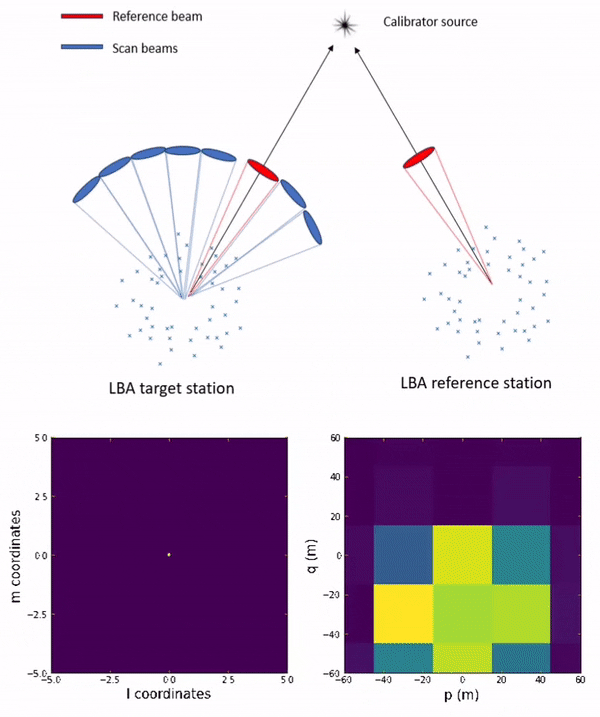Daily Image
07-09-2023Summer project: Holographic station calibration for LOFAR LBA
| Submitter: | Paul Otieno Akumu |
| Description: | Phased array antennas such as those used in LOFAR consist of multiple antenna elements working together by adjusting the phase and amplitude of each antenna signal and summing them to compensate for the time delay in the arrival from a specific direction and maximize sensitivity towards that direction. Errors and residuals existing when the signals are summed such as those due to propagation delays and different signal paths lead to reduced efficiency and overall sensitivity. To compensate for the errors and residuals in LOFAR stations, a holographic technique can be used. In this technique, at least two LOFAR LBA antenna fields are used, one to receive the phase reference beam and a second one which is the target for calibration to scan around a calibrator source while the antenna for the phase reference beam is kept at the source. By cross correlating the beam signals from the two antenna fields, the far field voltage beam pattern of the target antenna can be determined. Using the Fourier relationship between the far field voltage beam response and distribution of the electric field at the aperture, the residual phase delays at the target LOFAR LBA station can be determined. A limiting criterion in the technique is that, for a given station diameter and required resolution at the aperture, the range of scan beams across the sky is inversely proportional to the resolution. At low frequencies where LOFAR LBA operates, the beams are large and there is not enough space in the sky to fit the required number. We attempt to test the limits of pointing beyond the horizon sky coordinates. We also simulate the effect of noise and the limit signal-to-noise ratio required to solve for the complex antenna gains. |
| Copyright: | CC-BY-SA-NC |
| Tweet |  |
